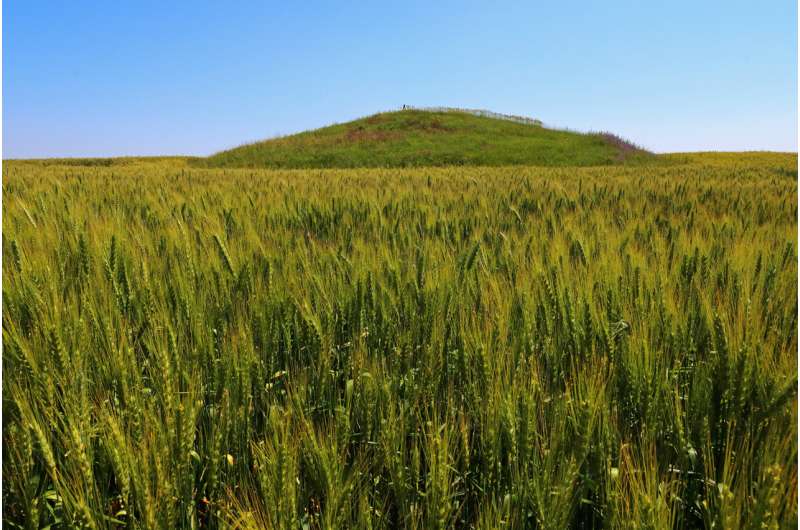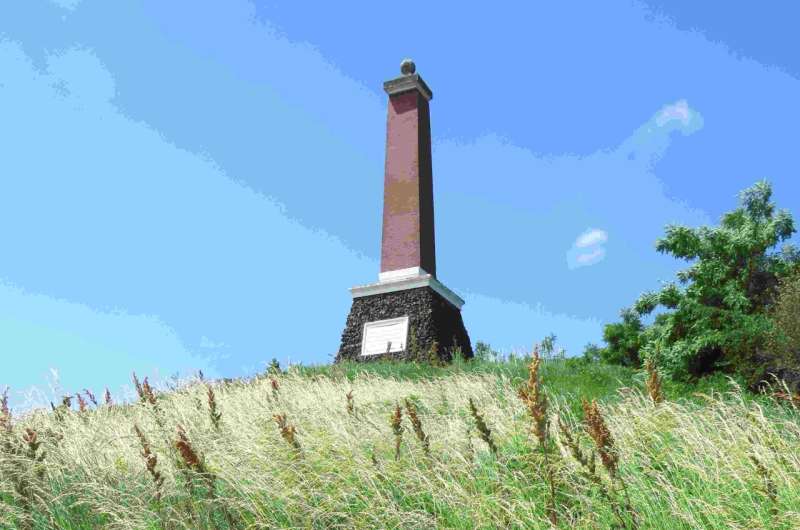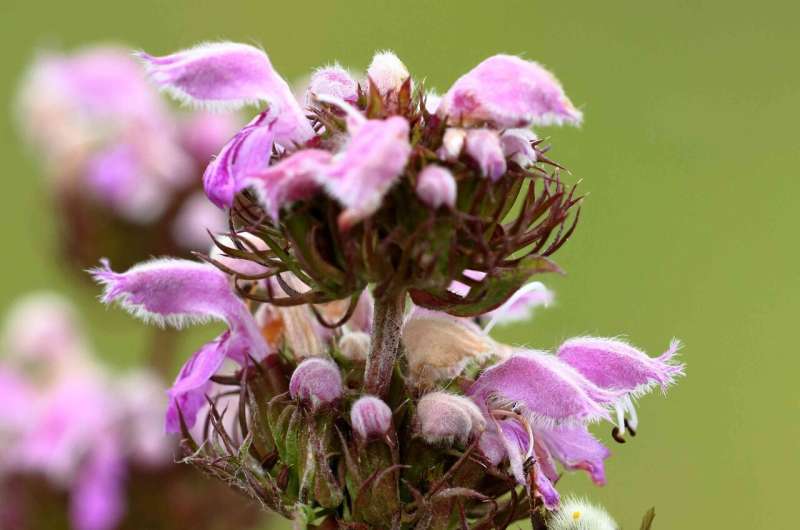This article has been reviewed according to Science X's editorial process and policies. Editors have highlighted the following attributes while ensuring the content's credibility:
fact-checked
peer-reviewed publication
proofread
Examining the contribution of cultural heritage values to steppe conservation on ancient burial mounds of Eurasia

During our history, ancient civilizations have considerably shaped the global ecosystems through a coevolution of landscape and local populations. In some cases, the legacy of the disappeared civilizations is still visible in the form of buildings and other monuments such as the Stonehenge, the buildings of the Roman and Hellenic Empires, and ancient burial places and fortresses built by several cultures.
These monuments are invaluable parts of our history and cultural heritage. Although it is often not in the spotlight, they can also hold a considerable biodiversity conservation potential.
In the vast steppes of Eurasia (and probably in the Earth), the most widespread ancient manmade structures are the ancient burial mounds (so called 'kurgans') that were built by steppic cultures (such as Yamanayas, Scythians, Sarmatians) during the Copper, Bronze and Iron ages. Although most of these sacral monuments were destroyed during the past centuries, approximately 600,000 kurgans can still be found in the steppes from Central Europe to the Altai Mountains.
Although the builders of the kurgans disappeared millennia ago, subsequent cultures recognized the importance of these sites and considered them spiritual and cultural hotspots even until the present day.
Besides their historical and archaeological importance, kurgans are also important sites for conservation. Originally, shortly after their construction steppe vegetation recovered on them, which could persist even till modern times. Therefore, kurgans that still hold grasslands could preserve a piece of the formerly existing vast steppes and a high biodiversity of steppe plant species.
However, during the past centuries both the kurgans and the formerly vast steppes suffered serious losses due to the expansion of ploughlands and urban infrastructure in many regions of Eurasia. Therefore, the protection of the remaining steppe habitats is of the utmost importance especially in the highly populated European regions, where there are only a few and small protected areas.

By involving more than 30 researchers from seven countries and using an extensive dataset of 1072 kurgans covering large geographical scales from Hungary to Mongolia, an international research group led by Balázs Deák (Centre for Ecological Research, Hungary) aimed to explore the potential of ancient kurgans in steppe conservation, and reveal how still existing cultural and spiritual values bound to the kurgans support the preservation of grasslands.
The researchers pointed out that in agricultural landscapes (typical of the western steppe regions in Eastern and Central Europe) where grasslands were severely affected and almost completely disappeared due to landscape transformation, almost half of the kurgans still preserve the remnants of steppe grasslands. In such landscapes, kurgans can act as biodiverse terrestrial habitat islands, which provide 'safe havens' for grassland biota.
As their former studies showed, even the smallest kurgans embedded in extensive arable lands can provide habitat for many red-listed plant species that otherwise disappeared from the landscape. In less intensively used landscapes where at least part of the former grassland stands remained, kurgans can function as stepping stones that can connect fragmented populations of grassland biota and also represent biodiversity hotspots.
The continent-wide study revealed that many kurgans are still actively used as spiritual or cultural hotspots in the steppe landscapes. Deák and colleagues found 57 different kinds of spiritual and cultural values (such as sanctuaries, churches, ancient statues, and stone pillars) on the studied kurgans.
Like in the case of sacred grooves, saint mountains, Christian sanctuaries in Southern Europe, the recognition and respect of the local communities highly supported the maintenance of grassland vegetation on the mounds by preventing negative land use changes (e.g. plowing) and by the extensive management (e.g. mowing and cutting woody species) provided for a well-kept appearance.
Consequently, they found that the presence of cultural values on the kurgans could almost double the chance of grassland presence. Interestingly, the 'protective power' of spiritual and cultural values was comparable to the effect of protected areas. In other words, the potential for grassland presence was comparable on mounds within protected areas and on mounds located outside the reserves but with some kind of cultural value.

The study suggests that to complement and support the system of protected areas, it is crucial to acknowledge the conservation potential of sites that, due to their associated cultural values, can harbor natural habitats even in nonprotected landscapes. These results highlight that an integrative socio-ecological approach in conservation could support the positive synergistic effects of conservational, landscape, and cultural values.
The work is published in the journal Conservation Biology.
More information: Balázs Deák et al, Contribution of cultural heritage values to steppe conservation on ancient burial mounds of Eurasia, Conservation Biology (2023). DOI: 10.1111/cobi.14148
Journal information: Conservation Biology
Provided by Ökológiai Kutatóközpont



















